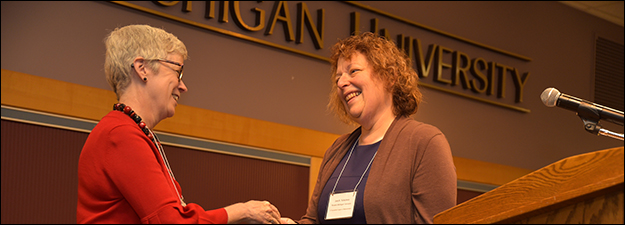Body and Soul in Medieval Visual Culture II
Sponsoring Organization(s)
Special Session
Organizer Name
Judith Soria, Jennifer Lyons
Organizer Affiliation
"Orient et Méditerranée," CNRS, Ithaca College
Presider Name
Jennifer Lyons
Paper Title 1
The Dialectic of Body and Soul in Medieval Funeral Art (1200-1500)
Presenter 1 Name
Robert Marcoux
Presenter 1 Affiliation
Univ. Laval
Paper Title 2
Fleshy Books, Soulful Writing, and Medieval Identity in the Flemish Last Judgment Fresco at Albi
Presenter 2 Name
Elizabeth M. Sandoval
Presenter 2 Affiliation
Ohio State Univ.
Paper Title 3
Mediators of Body and Soul: Representations of Plants as Physical and Spiritual Medicine
Presenter 3 Name
Sarah R. Kyle
Presenter 3 Affiliation
Univ. of Central Oklahoma
Start Date
14-5-2017 10:30 AM
Session Location
Fetzer 2016
Description
Medieval theologians and artists wrestled with the dual "natures" of the human form: the soul, whose indefinite substance is connected with ideas of the animate, and the body, visible and mortal. Monastic life (supposed to be essentially spiritual) was organized, according to Byzantine typika and Western monastic rules, as a way to control the passions and to master the body by regulating the most pragmatic aspects of daily life so that monks could focus on tending the soul through prayer. Medieval artists responded to this tension between the spiritual and the corporeal in various ways in the visual arts of the Greek East and the Latin West. In Genesis cycles, for example, the animation of Adam and Eve expressed this duality without picturing the soul itself, while in representations of the Dormition of the Virgin, the soul of the Mother of God was typically presented in the form of an infant or small, pale body. This session seeks papers that explore the range of ways in which medieval artists responded to the anthropological duality of body and soul in the visual arts of the Byzantine and Western medieval worlds.
Judith Soria
Body and Soul in Medieval Visual Culture II
Fetzer 2016
Medieval theologians and artists wrestled with the dual "natures" of the human form: the soul, whose indefinite substance is connected with ideas of the animate, and the body, visible and mortal. Monastic life (supposed to be essentially spiritual) was organized, according to Byzantine typika and Western monastic rules, as a way to control the passions and to master the body by regulating the most pragmatic aspects of daily life so that monks could focus on tending the soul through prayer. Medieval artists responded to this tension between the spiritual and the corporeal in various ways in the visual arts of the Greek East and the Latin West. In Genesis cycles, for example, the animation of Adam and Eve expressed this duality without picturing the soul itself, while in representations of the Dormition of the Virgin, the soul of the Mother of God was typically presented in the form of an infant or small, pale body. This session seeks papers that explore the range of ways in which medieval artists responded to the anthropological duality of body and soul in the visual arts of the Byzantine and Western medieval worlds.
Judith Soria

